ACROBiosystems provides comprehensive Organoid Toolbox solutions through sophisticated technology and experienced services, such as ready-to-use iPSC-derived organoids, cryopreserved organoids, organoid differentiation kits, and bespoke organoid services.
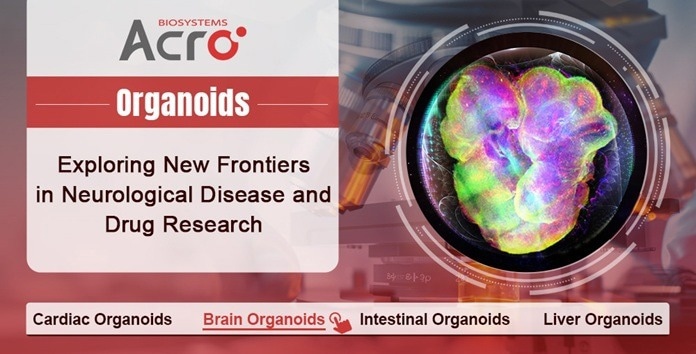
Image Credit: ACROBiosystems
These solutions enable advancements in disease modeling, drug screening, efficacy, and safety assessment, hence promoting innovation in biomedical research.
From traditional models to brain organoids: Unveiling new perspectives on neurological diseases
Neurological illnesses such as Alzheimer's disease (AD) and Parkinson's disease (PD) have long been difficult to study due to their complex pathophysiology and lack of effective therapies. Traditional research methodologies, such as animal models and two-dimensional cell cultures, frequently fail to represent disease complexity.
The emergence of induced pluripotent stem cells (iPSCs) and 3D brain organoid technologies has resulted in very biomimetic human brain tissue models.
Brain organoids can imitate brain growth, neural network construction, and complicated cell interactions, making them useful for disease modeling, gene therapy tool screening, and drug evaluation, thereby advancing precision medicine.
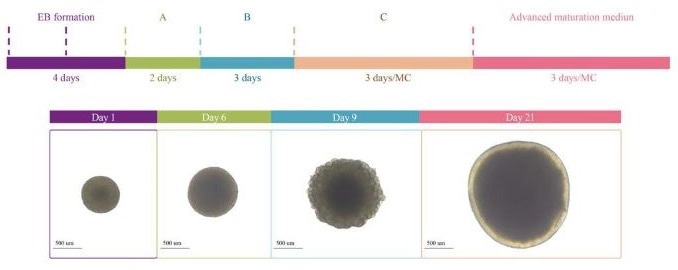
Figure 1. Protocol Diagram of Brain Organoid Differentiation. Image Credit: ACROBiosystems
Applications of brain organoids in neurological disease modeling
AD and Parkinson's disease are neurodegenerative disorders caused by aberrant protein aggregation. iPSC-derived brain organoids mimic the pathogenic processes of these disorders in vitro, including aberrant aggregation of Tau protein or α-synuclein (α-syn).
This allows researchers to investigate pathological changes in diseases and provide experimental insights to help identify viable therapy solutions.
AD modeling: Visualization of Tau protein aggregation
Brain organoids (Cat. No. CIPO-BWL001K) differentiated with the Organoid Differentiation Kit (Cat. No. RIPO-BWM001K) were co-cultured with varied concentrations of Tau Pre-formed Fibrils (PFFs) (Cat. No. TAU-H5113) to create an AD model (Figure 2).
Tau aggregation was significantly promoted by the addition of Tau PFFs, with higher PFF concentrations resulting in enhanced Tau aggregation, as evidenced by the elevation of p-Tau181 expression (Cat. No. PT1-Y2073).
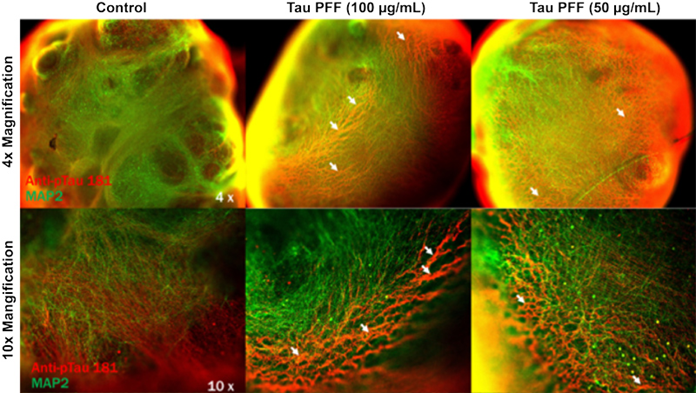
Figure 2. Tau PFFs induce Tau aggregation in brain organoids. Image Credit: ACROBiosystems
PD modeling: Degeneration of dopamine neurons
Brain organoids (Cat. No. CIPO-BWL001K) were differentiated using the Organoid Differentiation Kit (Cat. No. RIPO-BWM001K) and co-cultured with varied quantities of α-syn PFFs (Cat. No. ALN-H5115) to generate a Parkinson's disease model (Figure 3).
The addition of α-syn PFFs altered the expression of MAP2 and TH, indicating injury to mature neurons (MAP2) and dopamine neurons (TH).
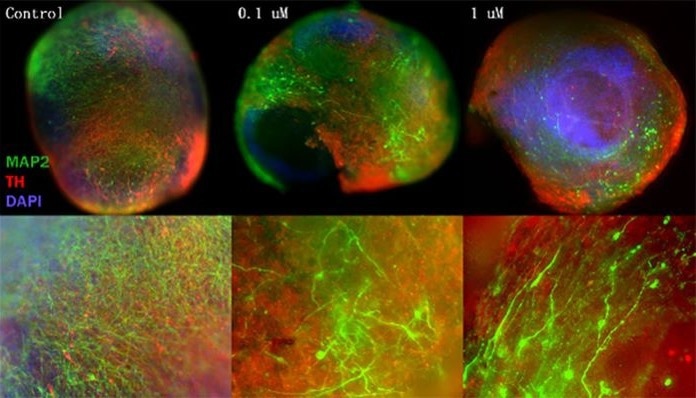
Figure 3. α-syn PFFs induce neuronal damage in brain organoids. Image Credit: ACROBiosystems
Application of brain organoids in the optimization of gene therapy vectors
Adeno-associated virus (AAV) vectors are widely used in gene therapy, where selecting the appropriate serotype plays a crucial role in ensuring effective gene delivery.
Brain organoids serve as a screening platform that closely resembles the complex environment of the human brain, allowing for exact assessment of the transduction efficacy of various AAV serotypes.
This method makes it easier to identify the most successful serotype, resulting in more targeted delivery and gene expression efficiency for AAV vectors in brain tissues.
Using brain organoids cultured for 101 days (Cat. No. CIPO-BWL002K), different AAV serotypes were applied for transduction.
Fluorescence microscopy findings (Figure 4) revealed that the IVB-2 serotype expressed more GFP in transduced brain organoids than the other serotypes, indicating superior transduction efficiency and more promise as a gene therapy vector.

Figure 4. GFP fluorescence expression in brain organoids transduced with different AAV serotypes. Image Credit: ACROBiosystems
Application of brain organoids in neurological drug evaluation
Gamma-aminobutyric acid (GABA) is a crucial inhibitory neurotransmitter that acts on GABA receptors to lower neuronal activity and keep neural excitability balanced.
Dysfunctions in the GABA receptor-mediated signaling pathway can cause excessive neuronal excitability, which may result in a variety of neurological diseases or dysfunctions.
Effects of Muscimol on neural activity in brain organoids
Muscimol, a GABA-A (GABAA) receptor agonist, enhances the inhibitory effects of GABA on neuronal activity by activating GABAA receptors. Its impact on neuronal activity was assessed using brain organoids (Cat. No. CIPO-BWL001K) (Figure 5).
Control brain organoids displayed intense network burst activity and a high mean spike firing rate, indicative of elevated neuronal activity. Conversely, brain organoids treated with Muscimol exhibited a significant reduction in network burst activity and a marked decrease in spike firing rate.
These findings confirm that Muscimol effectively suppresses neuronal excitability through GABA receptor activation.
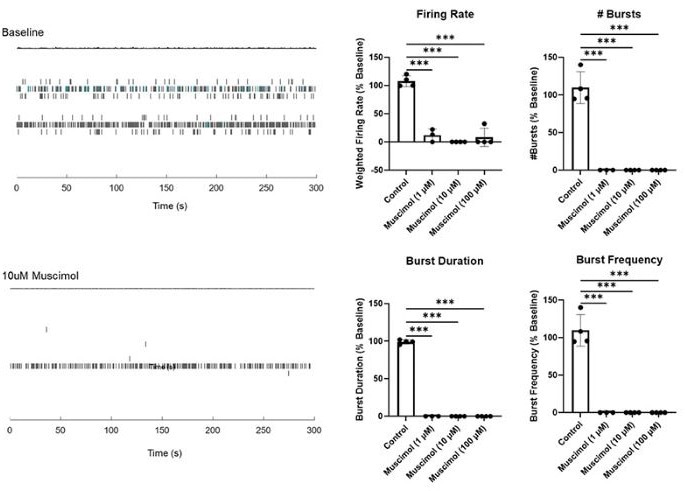
Figure 5. Effects of Muscimol treatment on neural activity in brain organoids. Image Credit: ACROBiosystems
Effects of Picrotoxin on neural activity in brain organoids
Picrotoxin, a GABAA receptor antagonist, inhibits inhibitory impulses provided by GABAA receptors, easing the inhibition of neuronal activity.
In brain organoids (Cat. No. CIPO-BWL001K) treated with Picrotoxin (Figure 6), synchronized network burst activity was observed, reflecting the establishment of synaptic connections between neurons. This synchronized bursting is widely regarded as a hallmark of mature synaptic connectivity within neuronal networks.
These findings suggest that Picrotoxin promotes neuronal activity and supports network maturation by inhibiting the activity of GABAA receptors.
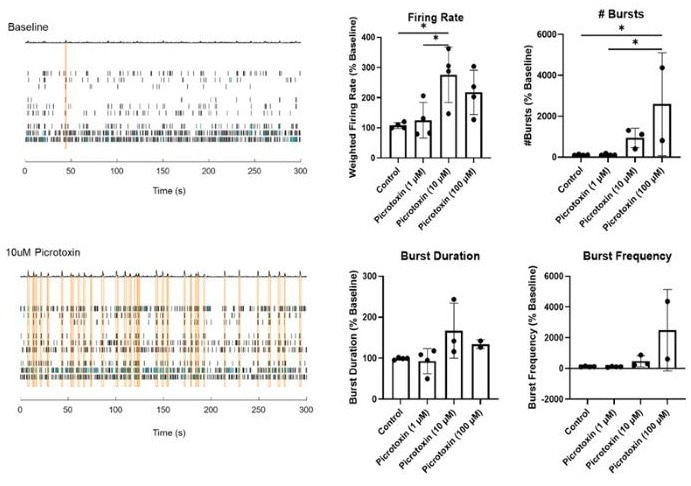
Figure 6. Effects of Picrotoxin treatment on neural activity in brain organoids. Image Credit: ACROBiosystems
Conclusion
Brain organoids, which are highly biomimetic 3D neural models, are emerging as a valuable platform for neurological illness research and treatment discovery.
Brain organoids simulate complex neuronal settings, not only replicating pathological changes in disorders such as Alzheimer's and Parkinson’s but also providing precise instruments for gene therapy and drug evaluation.
ACROBiosystems remains committed to advancing organoid technology, fostering breakthroughs in neurological disease research and drug development.

Image Credit: ACROBiosystems

Image Credit: ACROBiosystems
References
- Smirnova, L. and Hartung, T. (2024). The Promise and Potential of Brain Organoids. Advanced Healthcare Materials, 13(21). https://doi.org/10.1002/adhm.202302745.
- Li, Y., Zeng, et al. (2023). Advances and Applications of Brain Organoids. https://doi.org/10.1007/s12264-023-01065-2.
- Depla, J.A., et al. (2020). Cerebral Organoids: A Human Model for AAV Capsid Selection and Therapeutic Transgene Efficacy in the Brain. Molecular Therapy - Methods & Clinical Development, 18, pp.167–175. https://doi.org/10.1016/j.omtm.2020.05.028.
- Ito, S. (2016). GABA and glycine in the developing brain. The Journal of Physiological Sciences, 66(5), pp.375–379. https://doi.org/10.1007/s12576-016-0442-7.
About ACROBiosystems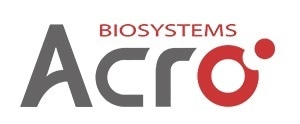
ACROBiosystems is a cornerstone enterprise of the pharmaceutical and biotechnology industries. Their mission is to help overcome challenges with innovative tools and solutions from discovery to the clinic. They supply life science tools designed to be used in discovery research and scalable to the clinical phase and beyond. By consistently adapting to new regulatory challenges and guidelines, ACROBiosystems delivers solutions, whether it comes through recombinant proteins, antibodies, assay kits, GMP-grade reagents, or custom services. ACROBiosystems empower scientists and engineers dedicated towards innovation to simplify and accelerate the development of new, better, and more affordable medicine.
Sponsored Content Policy: News-Medical.net publishes articles and related content that may be derived from sources where we have existing commercial relationships, provided such content adds value to the core editorial ethos of News-Medical.Net which is to educate and inform site visitors interested in medical research, science, medical devices and treatments.